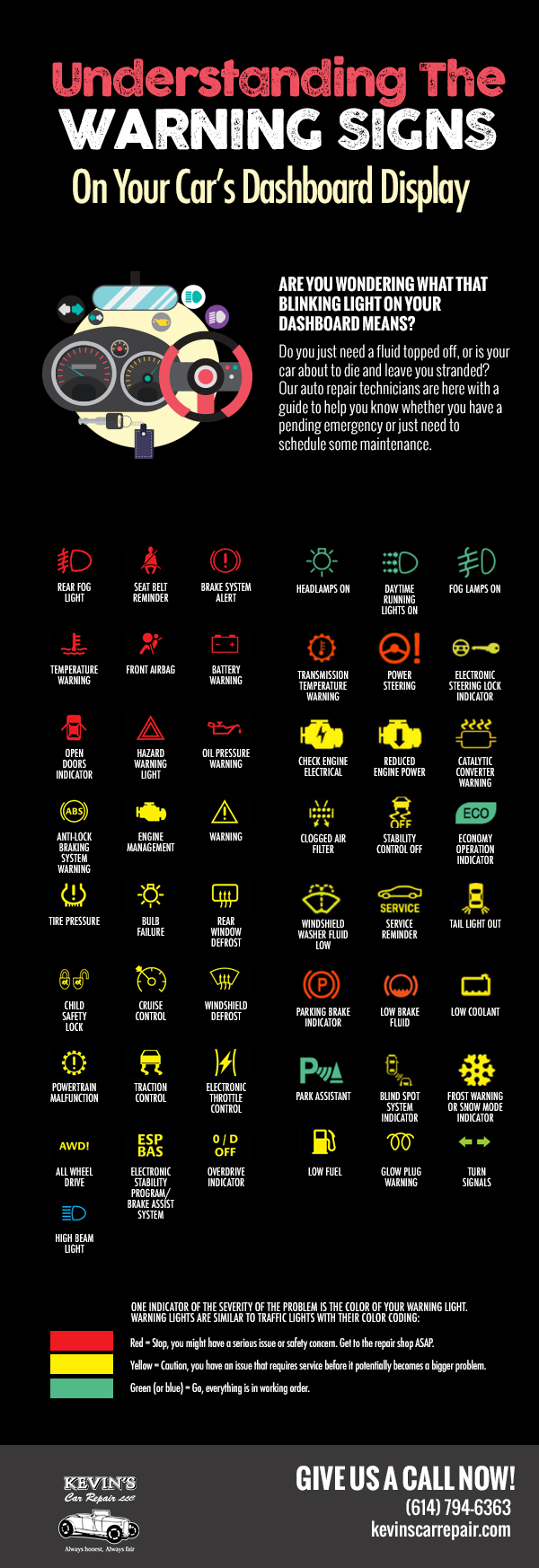Wondering Regarding The Meaning Behind Those Control Panel Caution Lights? Gain Insights Right Into Their Effects For Your Vehicle'S Safety And Upkeep
Wondering Regarding The Meaning Behind Those Control Panel Caution Lights? Gain Insights Right Into Their Effects For Your Vehicle'S Safety And Upkeep
Blog Article
Web Content Writer-Lauritsen Dalgaard
When you lag the wheel, those glowing warning lights on your control panel can be a bit complicated. Do you recognize what they're attempting to inform you regarding your cars and truck's wellness? Recognizing the relevance of these lights is crucial for your safety and the longevity of your lorry. So, the next time one of those lights pops up, wouldn't you intend to understand its message precisely and take the essential steps to resolve it?
Common Caution Lights and Interpretations
Recognize usual caution lights in your vehicle and recognize their definitions to make certain secure driving.
The most regular caution lights include the check engine light, which signals issues with the engine or emissions system. If carwashingnearme comes on, it's crucial to have your vehicle inspected quickly.
The oil stress cautioning light suggests low oil stress, requiring immediate focus to avoid engine damages.
https://www.rochesterfirst.com/fire-department/first-responders-fight-large-fire-at-auto-repair-shop-on-n-clinton-ave-in-rochester/ blinking battery light might suggest a faulty charging system, possibly leaving you stranded if not dealt with.
The tire stress surveillance system (TPMS) light signals you to reduced tire pressure, affecting automobile security and fuel efficiency. Disregarding this can cause dangerous driving conditions.
The abdominal muscle light indicates an issue with the anti-lock braking system, jeopardizing your capacity to stop quickly in emergency situations.
Last but not least, the coolant temperature warning light warns of engine overheating, which can result in extreme damage if not dealt with swiftly.
Recognizing these common caution lights will certainly assist you address issues promptly and preserve safe driving problems.
Relevance of Prompt Focus
Understanding the typical warning lights in your automobile is only the very first step; the value of immediately resolving these cautions can't be emphasized enough to guarantee your safety and security on the road.
When a warning light illuminates on your control panel, it's your cars and truck's way of connecting a potential problem that needs interest. Neglecting these cautions can lead to extra extreme problems down the road, jeopardizing your safety and potentially costing you more in repairs.
Motivate interest to warning lights can stop breakdowns and crashes. As an example, a blinking check engine light might show a misfire that, if left unattended, can create damages to the catalytic converter. Addressing this quickly can save you from an expensive repair.
In a similar way, a brake system warning light may indicate low brake fluid or used brake pads, critical components for your safety and security when driving.
Do It Yourself Troubleshooting Tips
If you observe a caution light on your dashboard, there are a few do it yourself fixing ideas you can attempt prior to seeking professional assistance.
The very first step is to consult your automobile's manual to understand what the particular caution light indicates. In some cases the concern can be as basic as a loosened gas cap causing the check engine light. Tightening the gas cap may fix the problem.
Another usual issue is a reduced battery, which can activate different warning lights. Examining the battery links for corrosion and ensuring they're safe and secure might fix the issue.
If a warning light lingers, you can attempt resetting it by separating the auto's battery for a few minutes and then reconnecting it. Additionally, inspecting your vehicle's fluid levels, such as oil, coolant, and brake liquid, can aid troubleshoot alerting lights connected to these systems.
Final thought
Finally, comprehending your cars and truck's warning lights is essential for maintaining your vehicle running efficiently and safely. By immediately resolving these alerts and understanding what they imply, you can stay clear of pricey repair services and possible breakdowns.
Bear in mind to consult your vehicle's guidebook for specific details on each warning light and do something about it appropriately to guarantee a trouble-free driving experience.
Remain notified, stay safe when traveling!
